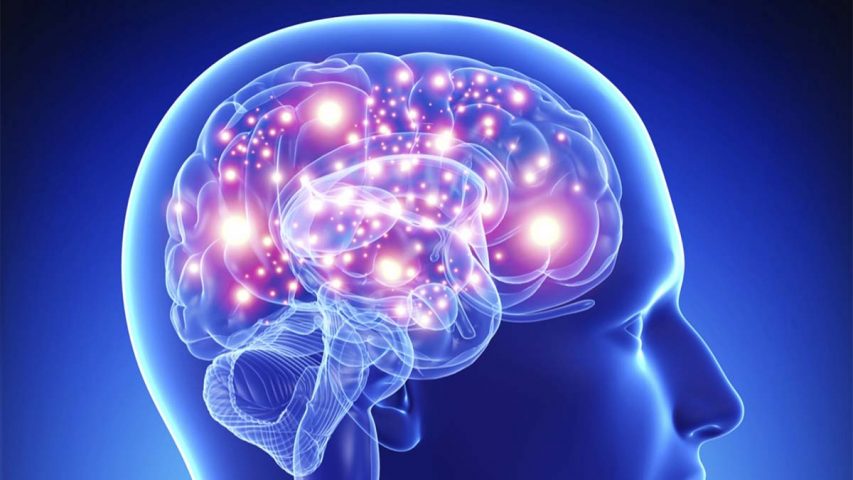- Have any questions? Contact us!
- info@dr-rath-foundation.org

Risk Of Major Bleeding And Death From Aspirin Even Higher Than Originally Thought
June 16, 2017
Natural Eradication of AIDS
June 26, 2017A Powerful Mind: The Huge Impact Of Inner Beliefs On Human Health

In 1955 medical researcher Henry Beecher, MD, published a study about a previously unknown field of medicine suggesting that beliefs can sometimes have a deeper impact on the human body than chemicals. In the study, one hundred medical students were divided into two groups of fifty. Each participant was asked to take a pill. One group received a red pill, the other a blue one. The participants were told that the red pill contained a powerful stimulant, and the blue one a tranquilizing drug. However, what they didn’t know was that the contents of the pills had been reversed. Contrary to what the students had been told, the red pill contained a barbiturate and the blue one had amphetamine in it.
What is interesting about this study is that 50 percent of the students still experienced the symptoms they were expecting to have. Half of the amphetamine group slept like babies, and half of the barbiturate group danced around for hours.
 Another example showing how the mind has enormous power over the body occurred in 1982 at Monterey Park, Los Angeles, during a football match. The arena was crowded with thousands of spectators. Some of those present got food poisoning. A physician who examined them concluded that a certain non-alcoholic soft drink, sold in a soda machine in one specific corner of the stadium, was apparently causing the sickness. To prevent more spectators from buying the affected drink, an announcement was made via loudspeaker. Thereafter the stadium descended into chaos. Large numbers of people fell ill with vomiting, fainting, or both. Panic ensued everywhere.
Another example showing how the mind has enormous power over the body occurred in 1982 at Monterey Park, Los Angeles, during a football match. The arena was crowded with thousands of spectators. Some of those present got food poisoning. A physician who examined them concluded that a certain non-alcoholic soft drink, sold in a soda machine in one specific corner of the stadium, was apparently causing the sickness. To prevent more spectators from buying the affected drink, an announcement was made via loudspeaker. Thereafter the stadium descended into chaos. Large numbers of people fell ill with vomiting, fainting, or both. Panic ensued everywhere.
Remarkably, even people who had not consumed the soft drink were affected. Nearby hospitals became filled with patients. But later there was an unexpected twist: it was announced that the soft drink was not the cause of the initial patients falling sick. Upon learning this, as if by magic, the ‘victims’ recovered almost as quickly as they had fallen sick.
The power of altering your belief system
 For many years, running a mile in less than four minutes was believed to be completely impossible. Countless athletes had tried and failed to achieve it. But in 1954, a British athlete and physician, Roger Bannister, achieved the impossible.
For many years, running a mile in less than four minutes was believed to be completely impossible. Countless athletes had tried and failed to achieve it. But in 1954, a British athlete and physician, Roger Bannister, achieved the impossible.
During his preparations for the race Bannister was certainly fast, but not fast enough. So he began training his mind. Mentally he visualized the run over and over again, and programmed himself to believe he could do it. Subconsciously, he directed his entire nervous system towards achieving his desired goal. As a result, he succeeded in setting what was then a new world record for the mile of 3 minutes 59.4 seconds.
 But then something strange happened. After Bannister proved that running a mile in under 4 minutes was possible, the following month another athlete managed to do it as well. Over the following years, many more athletes also broke the 4-minute barrier. It soon became almost routine. Today, even teenage athletes are running sub 4-minute miles.
But then something strange happened. After Bannister proved that running a mile in under 4 minutes was possible, the following month another athlete managed to do it as well. Over the following years, many more athletes also broke the 4-minute barrier. It soon became almost routine. Today, even teenage athletes are running sub 4-minute miles.
What happened is that once Bannister had done it, other athletes realized that running a mile in under 4 minutes was possible. As a result, their neurological setups (belief systems) changed. This was the precondition for their bodies to reach the desired goal.
Frequent repetition builds strong neurons
Whenever we experience something for the first time, a string of neurons is built that associate it with joy or pain. With every repetition of this experience the specific neuron-string gets stronger, forming a more stable ‘road’ and supporting other neurons nearby.
Once the strings of neurons are stable, we essentially become ‘forced’ to behave in a certain way. In other words, a biological highway is built as a direct result of our emotional experiences.
 To illustrate this further, Michael Merzenich from the University of California x-rayed specific areas of the brains of monkeys and located the region responsible for finger movement. He then taught the monkeys to present a specific finger in order to receive a treat. As monkeys are intelligent animals they quickly learned to present the correct finger to get food. Later, when analyzing their brains, Merzenich found that the neurons responsible for that specific finger movement had grown by 600 percent. Thereby, it was scientifically proven that belief systems are stable physical connections and not just immaterial ‘memories’.
To illustrate this further, Michael Merzenich from the University of California x-rayed specific areas of the brains of monkeys and located the region responsible for finger movement. He then taught the monkeys to present a specific finger in order to receive a treat. As monkeys are intelligent animals they quickly learned to present the correct finger to get food. Later, when analyzing their brains, Merzenich found that the neurons responsible for that specific finger movement had grown by 600 percent. Thereby, it was scientifically proven that belief systems are stable physical connections and not just immaterial ‘memories’.
Merzenich’s research demonstrated that every time you have an emotional experience, whether joyful or painful, new nerve cells are built. This ensures that similar situations can either be sought out or avoided. It is suspected that the more adrenalin is released through an emotion, the stronger is the growth boost experienced by the nerve cells.
But there is good news for everyone who suffers from bad habits: Merzenich’s research also showed that if the monkeys were forced to not use this specific finger movement anymore, or if they were simply ignored when they did, the relevant nerve tissue decreased to the same size it had been previously.
Change is possible
 Merzenich’s research proves that change is possible. If you avoid a certain behavior for long enough, the destructive emotion or habit will disappear.
Merzenich’s research proves that change is possible. If you avoid a certain behavior for long enough, the destructive emotion or habit will disappear.
Let´s say you want to lose weight, stop smoking, and lead a healthy lifestyle. According to Merzenich’s research, the best approach is to start re-programming your subconscious beliefs. And believe it or not, the most important tool for changing a belief system is pain.
Anthony Robbins, a self-help coach and international bestselling author, says it straight: “You want to stop smoking? Go to a nearby hospital and visit the emphysema patients, see them coughing and suffering. Go over and over again. Experience their pain. Feel it. The same goes for alcohol or drugs. Go to the rehab centers and spend a few afternoons there. It takes some courage but the effort is worth it. Take your kids along too, and ensure new neuron paths are being built in their brains. This way, new beliefs can be established.
When I was little I asked my mother to drink beer. She said ‘okay boy, drink beer, but you have to empty the entire six pack.’ I did. And I fell so sick after the third can, I had to clean everything from the kitchen table. I’ve never touched a beer or any alcohol since. The experience was so unpleasant that linking the smell of alcohol to sickness became deeply engrained in me.”
Most people only think about changing their diet when they get sick. This is why preventive health care is such a difficult issue. We only realize the importance of health once it is damaged and causing us pain.
| Peter, a 39-year old art director and father of two, describes his life-changing incident: “I was always told by my GP that if I ate a «normal diet» everything the body needs is covered. So I never thought I was doing something wrong when almost every day I had white bread in the morning with jam; fried meat, potatoes and sausages for lunch; and some donuts during working hours. My evening beer became a habit. Until that one day I couldn’t get up in the morning and was diagnosed with severe heart insufficiency. I fainted and upon regaining conscious in hospital, the doctors told me that my blood pressure was sky high, my cholesterol levels were dangerously through the roof, and my heartbeat irregular. How could all of this happen overnight? The answer was, it didn’t. I was sick long before I felt sick. And I had to do something about it. Now. Because I was now unable to move and really felt helpless with a catheter in my penis and a drip in my vein, not even having the energy to eat. I changed my belief that everything was fine. It was not. I wanted to be healthy. I pictured myself eating loads of fresh veggies and salads and visualized how they heal my body from inside. While tied to my bed in hospital, I got all the necessary information together, spent hours of my day researching and studying healthy, plant-based organic nutrition. I cut out toxins and ate a balanced diet along with plenty of fresh spring water. Within three months my body fully recovered. I’ve never touched a sausage since. My belief now associates fast food with pain, suffering and immobility.” |
 If a slim and healthy body is the goal but you are currently fat and lazy, your belief system has to change before transformation is possible. Either that, or you wait until you fall severely sick. As we know, pain is an important trigger for changing a belief system. But it is best to be proactive and think preventatively.
If a slim and healthy body is the goal but you are currently fat and lazy, your belief system has to change before transformation is possible. Either that, or you wait until you fall severely sick. As we know, pain is an important trigger for changing a belief system. But it is best to be proactive and think preventatively.
Think in detail about what advantages a healthy, athletic body would bring you. Picture the cells in your body being alive and vibrant. Imagine the clothes you can wear and the beaches you will swim at. Watch documentaries on how fast food is produced; read all about preservatives, colorants and stabilizers, and their link to cancer; read inspiring stories from people who formerly suffered from diseases or were overweight and now, after changing their diet, unlocked a whole new world of possibilities.
Good health is everything. And the more you keep yourself busy with thinking about the fresh and vital ‘you’, new neurons are being built and new beliefs set. When you start getting slimmer and feel fresher, your environment will compliment you on how good you are looking. Your new belief will become: ‘healthy eating equals looking and feeling great’. And the more positive experiences you collect, the stronger will be the new neuron paths that are built.
Having achieved this, you will then want to continue eating healthily as you will subconsciously seek more of the good feelings it brings you.
| Congratulations, your brain was successfully re-programmed! |
When you start becoming the software engineer of your own head and mastering your belief systems, you may be entering the most powerful stage of your life!



